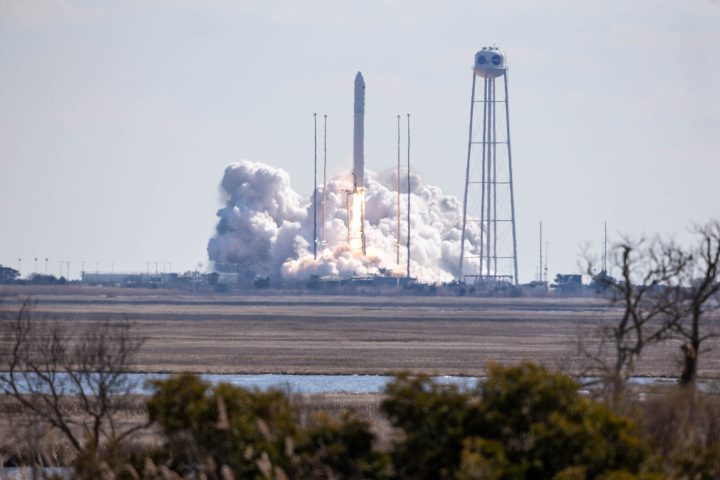
Yesterday a Northrop Grumman Cygnus cargo spacecraft was launched on a mission to resupply the International Space Station (ISS). The craft, named the SS Katherine Johnson in honor of the groundbreaking NASA mathematician for Black History Month, is now on its way to the station carrying 8,000 pounds of supplies and scientific equipment.
The launch went ahead at 12:36 p.m. ET on Saturday, February 20 from NASA’s Wallops Flight Facility in Virginia. Around three hours after liftoff, the craft deployed its solar arrays which will collect power from the sun to power its journey to the space station. This journey will take until early Monday morning, when a member of the ISS crew — JAXA’s Soichi Noguchi — will capture the craft and install it onto the station’s Unity module.
This is the 15th resupply mission by Northrop Grumman, and it carries a number of scientific experiments as well as supplies for the crew.
The company names its Cygnus spacecraft after pivotal figures in human spaceflight, and it chose to honor the contributions of Katherine Johnson with this launch. Her work as a “computer,” performing complex calculations by hand, was pivotal in the success of the early Apollo missions. She worked at NASA for over 30 years, and she passed away last year at the age of 101.
Johnson’s continuing influence was acknowledged by NASA flight director Adi Boulos. “I am humbled to be the International Space Station Flight Director for the Northrup Grumman CRS-15 mission,” Boulos said in a statement. “This spacecraft has the honor of being named the S.S. Katherine Johnson. As a Black woman, Katherine Johnson shattered race and gender barriers to live out her dreams and become a pivotal part of this country’s young space program. Fifty-nine years ago today, astronaut John Glenn became the first American to orbit Earth after personally asking for Katherine Johnson to verify his Mercury missions’ orbital trajectory calculations. Katherine Johnson was an asset to our space program, and I am honored to work for a mission that expands her legacy even further.”



